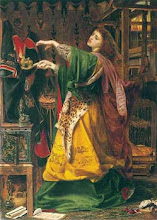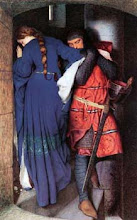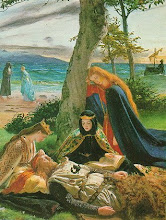Thursday, August 6, 1998 Published at 13:51 GMT 14:51 UK UK
Clue to King Arthur discovered
The sixth century stone that bears the inscription Artognov An ancient stone bearing a sixth century inscription similar to the name Arthur has been unearthed at Tintagel Castle, the mythical birthplace of the legendary king.
The discovery could prove that King Arthur had his headquarters at the site of ruined castle on the coast of north Cornwall.
The discovery could prove that King Arthur had his headquarters at the site of ruined castle on the coast of north Cornwall.
The stone is a 35cm by 20cm piece of slate inscribed with the name Artognov - Latin for the English name Arthnou.
A spokesman for English Heritage, the conservation organisation that announced the discovery, said the stone was "the find of a lifetime."
He said it added "a new dimension to the possibility of there having been a real Arthur on whom the mythical figure was based."
Stop-gap for a leaky drain
The stone was unearthed towards the end of the latest round of excavations at Tintagel, which is owned by the Duchy of Cornwall.
It had been broken in order to be used as a drain cover outside a sixth of seventh century building.
Arthur's stone, along with other recent finds, helps fill in some of the many gaps that still exist in Tintagel's history, despite extensive excavations in the area that first began in the 1930s.
The new discoveries provide further evidence for the existence of some kind of royal headquarters at Tintagel for a Dark Ages ruler of Cornwall.
Dr Geoffrey Wainwright, chief Archaeologist with English Heritage, said: "Despite the obvious temptation to link the Arthnou stone to either the historical or the legendary figure of Arthur, it must be stressed there is no evidence to make this connection.
"Nevertheless it proves for the first time that the name existed at that time and that the stone belonged to a person of status."
The undisputed Arthur
Tintagel expert Professor Charles Thomas said the inscription's informal Roman lettering could be translated as: "Artognou, father of a descendant of Coll, has had (this) constructed".
English Heritage said that as a historical figure Arthur almost certainly did exist as a successful soldier fighting battles across the country in the sixth century.
Long literary history
Literary references to Arthur can be found in the ninth century. The 12th century writer Geoffrey of Monmouth first wrote of him as a romantic hero and linked him with Tintagel.
The famous tales of Arthur and his round table were put together by the Norman writer Wace. These were followed in the 15th century by Sir Thomas Malory's Le Morte D'Arthur chronicle.
The stories were taken further by the 19th century poet Alfred, Lord Tennyson.
Excavations at Tintagel over the years have provided clues that it was a high status - possibly royal - site of a Cornish chieftain.
The Arthur stone also shows that the inhabitants of Tintagel carried on living a Romanised life, and read and wrote Latin, long after the Romans left England in 410 AD.
A varied life
Tintagel relies heavily on its connection with King Arthur, and the new stone will enhance that link.
There are many variations in tales of the mythical king's life. Geoffrey of Monmouth's 12th century legend told how Arthur was born after his mother was seduced by a king, whom the wizard Merlin had transformed into her husband.
Another version says that Merlin found the baby Arthur was ashore in a cave below the castle.
As one guidebook for Tintagel says: "Fact hereabouts is tremendously hard to separate from fiction."
Tintagel facts
Occupation of the site at Tintagel castle dates back to Roman times.
Historians believe the castle was built in the early 13th century by Earl Richard of Cornwall.
By the late 15th century the castle was ruined and deserted.
A fire at the site in the early 1980s led to the discovery of the remains of around 50 buildings and some pottery.
Despite decades of investigation Tintagel remains a mystery, says English Heritage.


































0 comments:
Post a Comment